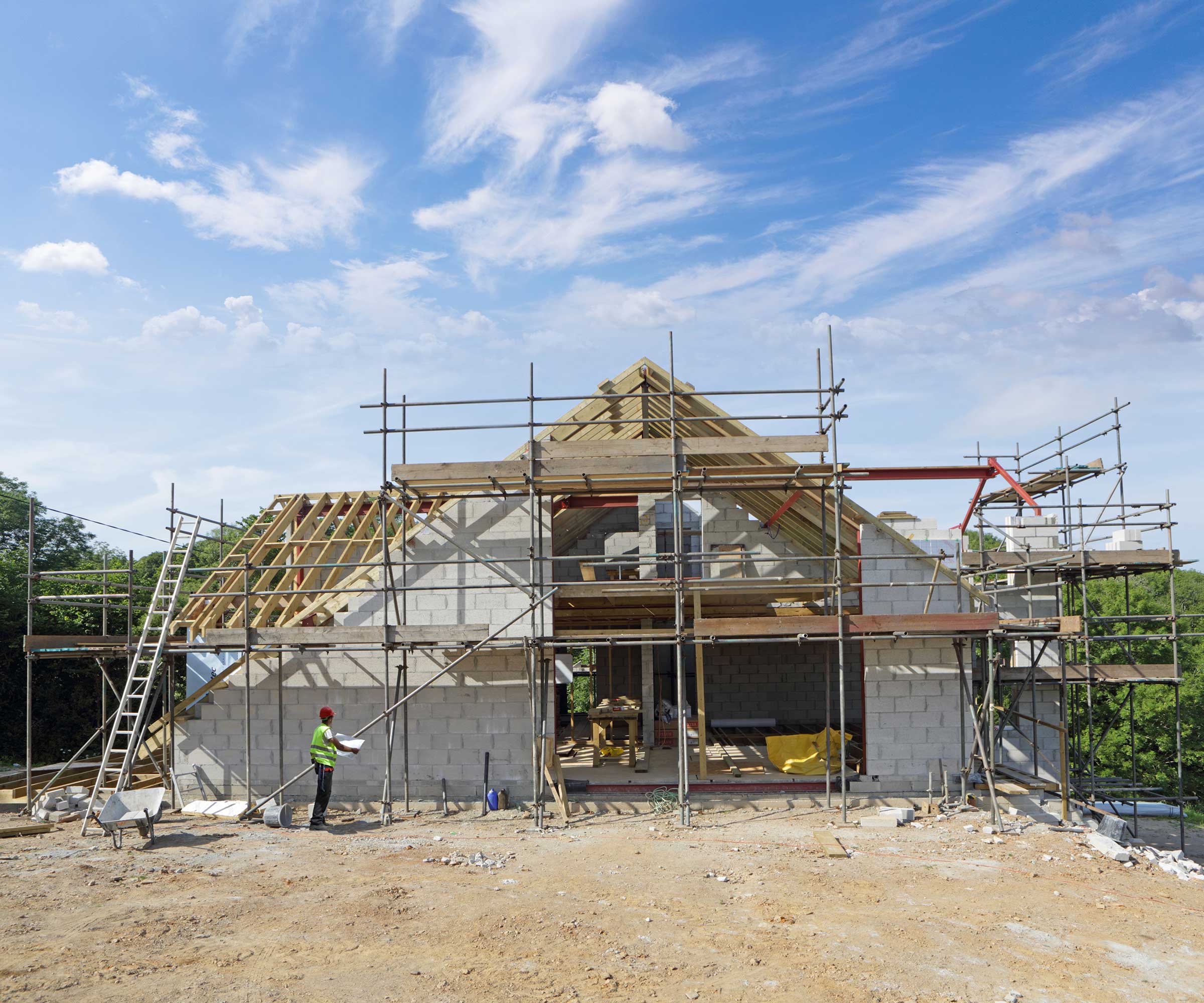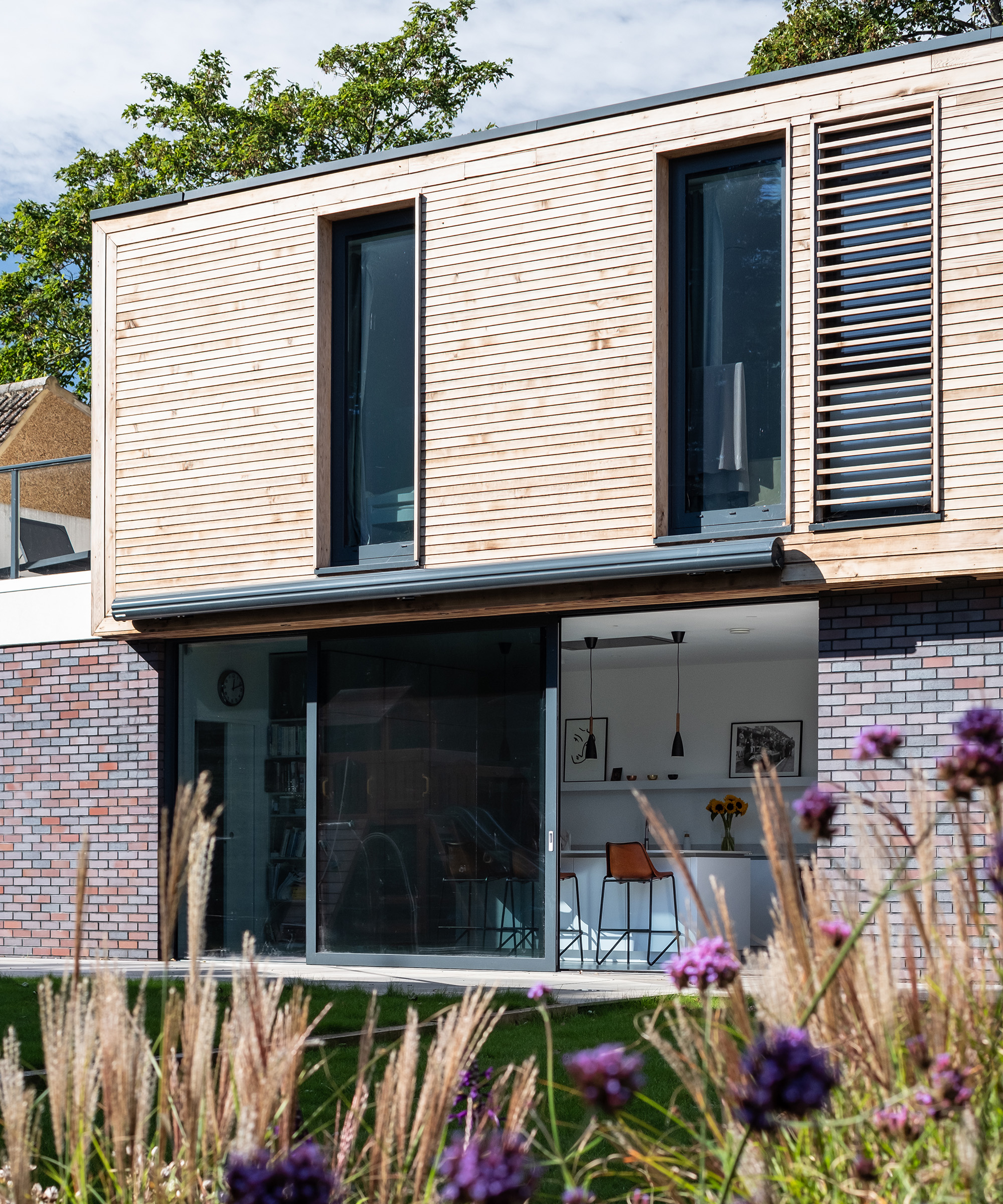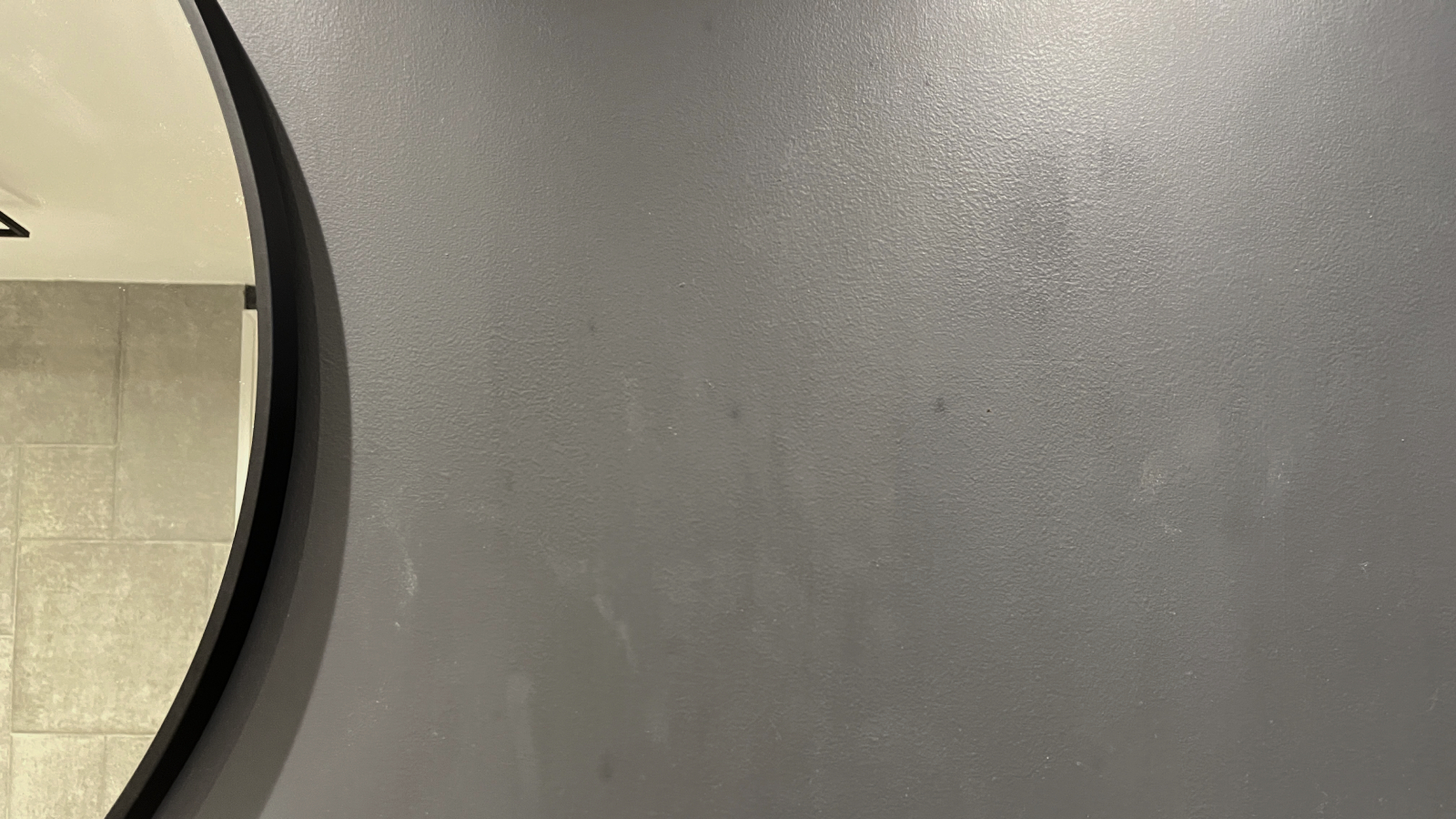I'm a quantity surveyor and this one document can be your building project's secret weapon
Discover why a Bill of Quantities is a practical method of costing your building project and how it can help you keep a tighter control of your budget

One of the most common questions homeowners have when they want to carry out a self-build, renovation or extension is how to correctly estimate the project and keep costs down. In my opinion, it’s now more important than ever to get a firm grip on your building budget from the start, since the costs of materials and labour may change over time. That’s when a Bill of Quantities (BQ) is very important.
As a quantity surveyor (QS), I produce lots of BQs throughout the year for clients. When there is a lot of uncertainty, a Bill of Quantities can provide clarity for individuals doing a major home renovation or self-build. It lowers the possibility of issues with builders, helps avoid unforeseen costs and enables you to compare comparable quotations throughout the tendering process. To put it briefly, it’s a professional tool that gives your budget rigour and your build confidence.
In this article, I’ll look at what goes into a Bill of Quantities, when and how it’s utilised, and the benefits it offers to residential projects of all sizes. Knowing how a BQ operates could be the best first move you make, whether you’re building your dream house from the ground up or expanding and renovating a period Victorian terraced house.
What is a Bill of Quantities?
A Bill of Quantities is a ‘control document’ that lists all quantities of materials and labour as an item that will be required to successfully complete a building project.
They are typically used for large self-build projects, but they are increasingly common for domestic/residential projects these days too, such as extensions and loft conversions.
Most importantly, it brings together the quantities to units of cost, which means you and your builder have a clear way of tendering the project, establishing a contract sum to go into your chosen contract and also using it as a valuation tool throughout the project to keep track of costs during the build.
What’s included in a Bill of Quantities?
The materials, labour and plant needed to complete a build project are listed item by item in a structured control document called a Bill of Quantities. It is based on the architect’s drawings, specifications, and any other pertinent design information at the time (such as from a structural engineer, interior designer, electrical consultant), and is usually compiled by a quantity surveyor.
Bring your dream home to life with expert advice, how to guides and design inspiration. Sign up for our newsletter and get two free tickets to a Homebuilding & Renovating Show near you.
For uniformity across tenders, each item in a Bill of Quantities is measured and described in compliance with an acknowledged standard method of measurement, such as the New Rules of Measurement (NRM) in the UK.
Each description includes space for builders to add their unit rates and costs as well as the amount of work needed (e.g. "45sq m of internal plastering" or "12m of 100mm soil pipe").
Self-builders, renovators and extenders doing major extensions or renovating a house are increasingly using this type of document, which is more frequently found on commercial and public sector projects.
This is particularly true when controlling costs is a top concern on a self-build, you're looking for ways to reduce the cost of an extension, or when a comprehensive tender package is needed.

What are the main benefits of a Bill of Quantities?
There is much more to a well-written Bill of Quantities than merely a list of numbers. It can be one of the most useful tools for anyone organising a new build, kitchen extension or significant renovation project in order to lower financial risk, enhance planning and keep control of the entire project.
The main advantages are as follows:
- Comparing and tendering quotations
The tendering process is one of the main functions for a Bill of Quantities. It guarantees that all bids are based on the same scope of work by giving each builder or individual tradesperson the same thorough explanation of the work. Instead of attempting to interpret vastly different quotes with assumptions, omissions or varying pricing methods, you can compare like-for-like quotations via the BQ tender returns. A well-written Bill of Quantities lowers the possibility of ‘contingency pricing’ in which builders inflate estimates to account for unknowns, by preventing them from making educated guesses regarding quantities and specifications. This leads to more transparent and fairer pricing for the client. - Budgeting and cost control
A Bill of Quantities serves as a baseline for continuing cost control during the project. You or your quantity surveyor can track variances, keep an eye on progress and evaluate the value of work done at any point because it quantifies every aspect of the build. It’s also a useful tool for identifying differences early on when comparing what was originally priced with what is being claimed in valuations. The BQ enables simple recalculations and changes in the event that a design change occurs mid-project, which happens frequently, so you can quickly and precisely evaluate the impact on your entire budget. - Outlining the work’s scope
Misunderstandings on what is and is not included in the builder’s quotation can be avoided with the aid of a BQ. It lays out a common understanding of the work that has to be done, in line with the engineering and architectural design, which lessens the possibility of any disagreements or misunderstandings later on, resulting in expensive variations. This transparency is also appreciated by builders. It enables them to place orders with suppliers knowing that quantities have been expertly calculated, plan with greater efficiency and price with confidence. - Planning for programmes and resources
The Bill of Quantities aids programme planning by outlining what must be built and in what quantity, even though it is not a planning document itself. It can be used by builders to predict labour and material requirements throughout the project, lowering the possibility of delays brought on by incorrect ordering or a lack of resources. - Valuations and interim payments
It also acts as a benchmark for calculating the actual value of work completed at regular intervals (as agreed in your contract) for projects that are based on an interim valuation or stage payment basis. This guarantees that payments are determined by actual progress rather than time spent on site – you don’t want to overpay. - Variations and change management
Whether because of site conditions, client preferences or planning permission restrictions, changes will always occur during a building project. With the same structure and unit rates as the original document, a Bill of Quantities makes it possible to price these variations fairly. This significantly simplifies and increases the transparency of evaluating the financial impact of variations.

Different types of Bills of Quantities
There is no one-size-fits-all approach to Bills of Quantities. There are various formats for the document, depending on the level of design detail and the purpose of the document (e.g. contract administration, budgeting or tendering). Each has a distinct function, degree of accuracy and amount of detail.
- Preliminary Bill of Quantities
In the early phases of designing extension or self-build, when not all the information has fully been designed, a preliminary Bill of Quantities is usually created. It is frequently used for early cost planning or feasibility studies and may be based on indicative amounts, budget assumptions, or elemental breakdowns (e.g. walls, roof type, floors). I use this method to provide early cost advice for clients and architects. It’s helpful for establishing a baseline budget or determining affordability prior to the completion of the full design, even though it’s less thorough than a complete BQ. Clients looking for budget quotes from builders without a full competitive tender can also use this approach. - Final Bill of Quantities
A final Bill of Quantities, also known as a firm BQ, is a comprehensive pricing document created after all specifications have been agreed upon and the design is finalised and frozen. In accordance with a recognised standard method of measurement (often NRM2 for residential construction), it lists each measurable component of the work. Usually used in official tendering procedures, this provides builders with a thorough, transparent foundation upon which to set their prices. Once a builder is engaged, it becomes a ‘contract sum’. This is an important part of the contract and serves as the basis for managing variations throughout the project, controlling costs, and agreeing valuations. - Schedule of Works
For minor residential projects when a complete Bill of quantities could be excessive, a ‘Schedule of Works’ is occasionally used, even if it is not a BQ in the traditional sense. It is usually used to get competitive bids for small kitchen extensions or simple renovations and lays out the work required in list form, frequently without fully measured quantities.

What does a Bill of Quantities look like?
The scope, quantities, and pricing requirements are all clearly laid out in a professionally generated Bill of Quantities, which is typically generated in spreadsheet (Excel) or tabular form. The majority of BQs adhere to a similar logic and structure, though formatting may differ significantly based on the quantity surveyor or software used.
Sections of a standard BQ are separated according to work categories, which are frequently organised either by trade package (e.g. brickwork, carpentry, electrics) or by element (e.g. foundations, walls, roof).
Next, each section contains:
- Item number This serves as a reference.
- A description of the work For example, "excavate foundation trench to 600mm width and 1000mm depth". Depending on the work, the unit of measurements are as follows – linear meters (m), m², m³, tonnes (t) or item number (nr).
- Quantity The amount of each item required, such as 26sq m of 12.5mm Lafarge plasterboard.
- Rate An empty column where builders can enter the cost per item.
- Total A line-by-line total obtained by multiplying the quantity by
the rate. - Each section finishes with a subtotal The document then concludes with a grand total/summary.
A complete BQ may also contain the following:
- Preliminaries Scaffolding costs, site or self-build insurance, site setup, protection and adherence to health and safety regulations.
- Provisional sums Sums for work that hasn’t been completely planned, designed or defined yet.
- Daywork rates Fees for unanticipated work/variations.
- Schedule of rates For variations in prices or extra items with fixed pre-agreed unit costs.
Specialised quantity surveying software, such as CATO, CostX, or Excel-based templates, is currently used to create the majority of BQs since it makes editing simple, exports to PDF, and integrates with pricing systems.
While builders use editable versions to add their pricing, some homeowners and self-builders might only ever view the printed or digital PDF version.
How to draw up a Bill of Quantities
A quantity surveyor like myself will prepare a Bill of Quantities. This build professional has training in measuring and estimating a wide range of build projects or extension ideas. To draw up the BQ, they collaborate closely with your architect and design team.
Many quantity surveyors work alone or as part of small consultancies, providing services directly to homeowners in the context of self-builds, extensions or renovations. Some architects could suggest a reliable quantity surveyor to draft the Bill of Quantities for you. Most clients approach me as a recommendation through an architect.
The quantity surveyor will examine all relevant design data, including floorplans, elevations, construction details and specification, in order to create the Bill of Quantities. The BQ will be more exact the more detailed and frozen your design is. To maintain uniformity and clarity, the QS will typically adhere to the RICS New Rules of Measurement (NRM), particularly if the document is intended for use in a tender.
It’s crucial to remember that a BQ is typically required as a standalone document and isn’t always included in conventional architectural or design services. However, for the majority of large domestic projects, the benefits it offers in terms of cost management, finding a builder and dispute avoidance make it a viable investment.
Basically, it pays for itself. Also, if you are having a design and build package (turnkey) ask your builder if they have an in-house BQ service as part of the proposal, however you may pay a little more for this as it may be passed to a third-party QS to produce anyway.
At what stage of the project should you have a Bill of Quantities?
When your design is complete and you are at ‘design freeze’ (but before you put it out for tender or engage a builder), you should engage a QS to produce a Bill of Quantities. When you have a complete set of architectural and structural engineers’ design, and a draft specification in place, you typically reach this point in the detailed design process.
The quantity surveyor now has sufficient info to measure the project and create a BQ. The BQ may need to be updated multiple times as the design develops if it is commissioned too early (during the concept or planning stages) resulting in needless expense.
Some homeowners could try to make a simple schedule on their own, especially for smaller projects, but it’s easy to forget important details or estimate quantities incorrectly if they lack specialised experience.
How much does a Bill of Quantities cost?
A Bill of Quantities guarantees clarity and offers a strong framework for overseeing the cost of your self-build or extension costs.
A typical price for a Quantity Surveyor to produce a Bill of Quantities for a small extension or renovation can start from £649, with a new-build house ranging from £1,150.
It's important to point out, however, that it all depends on the level of detail and number of drawings that we have to work with.
Having a Bill of Quantities in place lets your builder and any other specialists know that you’re taking a methodical, planned approach to the building project. For self-builders and renovators who might be handling a significant investment and are in uncharted territory, it contributes a degree of expertise to the process and provides genuine peace of mind.
To determine whether it’s a good fit for your build, consult a quantity surveyor as soon as possible. Remember, a Bill of Quantities will pay for itself in the long run as it can stop your build going over budget.
Tim Phillips is an experienced senior quantity surveyor and estimator and has worked in the construction industry for over 35 years. He has worked on many varied projects in this time, for corporates, public bodies and private residential clients, managing multi-million budgets.
For the past 13 years, Tim has worked on a freelance basis, whilst managing his rental property portfolio. He has extensive experience of undertaking his own full-scale house renovations. He is also a speaker and expert at the Homebuilding & Renovating Shows.

